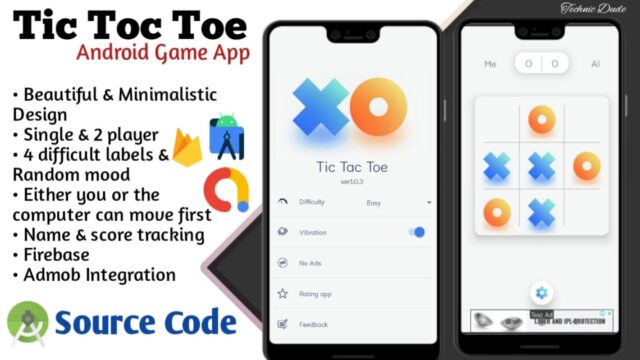1. preparations are avoided during pregnancy.
a) Vitamin E
b) Vitamin A
c) Folic acid
d) Zinc
2. Ototoxicity is a unique side effect of group of diuretics.
a) Loop
b) Thiazide
c) Potassium sparing
d) Osmotic
3. antihypertensivetherapy should be avoided in type-1 diabetes mellitus
a) ACE inhibitors
b) High dose diuretics
c) Centrally acting
d) calcium channel blockers
4. is an example of Category X drugs
a) Diclofenac
b) Ranitidine
c) Lorazepam
d) Paracetamol
5. has positive evidence of human fetal risk, but the benefits from use in pregnant women may be acceptable despite of risk.
a) Category A
b) Category B
c) Category C
d) Category D
6. is indicated in agitation and restlessness in the elderly, despite the high incidence of extrapyramidal side-effects.
a) Prochlorperazine
b) Clozapine
c) Haloperidol
d) Flupentixol
7. is contraindicated during pregnancy due to its Teratogenicity.
a) Folic acid
b) Calcium
c) Retinol
d) Iron
8. commonly reported ADR of diuretic class of drugs.
a) Hypokalemia b) Alopecia
c) Skin disorder
d) Rhinitis
9. Young’s Rule is applicable for calculating dose of children’s
a) Upto 1 year
b) Upto 1 to 2 year
c) Upto 1 to 5 year
d) Upto 1 to 12 years
10. Pharmacodynamic drug interactions includes
a) Changes in gastro-intestinal Ph
b) Induction or inhibition of drug transport proteins
c) Additive or synergistic interactions
d) Adsorption, chelation and other complexing mechanisms
11. Which of the following responsibility of the clinical pharmacist is indirect patient care area?
a) Supervision of drug administration techniques.
b) Providing drug information to physicians and nurses.
c) Identify drugs brought into the hospital by patients.
d) Reviewing of each patient’s drug administration forms periodically to ensureall doses have been administered.
12. is the organization to manage the procurement, storage, preservation, packaging, sterilization, compounding, preparation, dispensing or distribution of medicine.
a) Clinical Pharmacy.
b) Hospital Pharmacy.
c) Community Pharmacy.
d) Ambulatory Pharmacy.
13.Which of the following responsibility of community pharmacist is in dispensing area?
a) Reviews all doses missed, reschedule the doses as necessary & signs all drugs not given notices.
b) Supervision of drug administration.
c) Ensures that establishes policies & procedures are followed.
d) Reviewing of each patient’s drug administration forms periodically to ensureall doses have been administered.
14. Which of the following is verbal communication skill for effective patient counselling?
a) Language.
b) Proximity.
c) Facial expression.
d) Eye contact.
15. The most specific & sensitive method for assessment of compliance can be used to detect potent therapeutic agent in body fluids is
a) Drug analysis.
b) Interrogation.
c) Urine marker.
d) Residual Tablet counting.
16. Organogenesis occurs during stage.
a) Pre-embryonic.
b) Embryonic.
c) Pre-Fetal.
d) Fetal.
17. absorption in infants and children is noticeably faster than in neonatal period.
a) Oral.
b) Topical
c) Intravenous.
d) Intramuscular.
18.Which of the following drug does not require therapeutic drug monitoring?
a) Digitoxin.
b) Gentamycin.
c) Phenytoin.
d) Paracetamol
19.The studies are to determine a pharmacological profile, safe dose and assess potential toxicity of the product on laboratory animal is knownas
a) Observation study.
b) Clinical study.
c) Preclinical study.
d) Statistical study.
20.Autonomy in clinical studied is defined as
a) Freedom, dignity and confidentiality of the subject; right to choose
i. whether or not to participate in the trial or to continue with it.
b) Motive to do good to the subject and/or the society at large.
c) Not to do harm or put the participant at undue risk/disadvantage.
d) Observance of fairness, honesty and impartiality in obtaining, analyzing & communicating the data.
21. side effect is seen during the treatment with Levodopa
a) Dyskinesias
b) Bone marrow depression
c) Thombocytopenia
d) Impotence
22. is a major role of clinical pharmacist.
a) Premarketing surveillance
b) Postmarketing surveillance
c) Preclinical study
d) Patient Counseling
23. is not required in TDM
a) Dosing regimen
b) Preclinical research data
c) Time of the sample
d) Indication for therapy
24. drug is usually avoided with breastfeeding.
a) Ibuprofen
b) propranalol
c) Methotrexate
d) Naproxe
25.The sponsor in clinical study is
a) Country.
b) Organisation.
c) Society.
d) Cohort.
26. The written details for conduct trails to ensure quality control of trail is known as
a) GCP.
b) SOP.
c) IEC.
d) ADR.
27.What is bioequivalence?
a) Comparison between 3-year-old drugs to the same new drug.
b) Comparison between drugs to another drug.
c) Comparison between a drug’s specific characteristics to a defined set of Standards.
d) Comparison between two or 3 characteristics of a drug to the same characteristics of a different drug.
28.Science of collecting, monitoring, researching, assessing and evaluating information from healthcare providers and patients on the adverse effects of medications is known as
a) Pharmacovigilance.
b) Clinical Trails.
c) Observational study.
d) Qualitative study.
29. Which of the following statements is true concerning epidemic diseases?
a) They are usually not very contagious.
b) At the end of an epidemic, a disease spreads at an increasing rate and then
i. abruptly disappears.
c) They usually appear and disappear seasonally.
d) It can be spread globally.
30.An epidemic that becomes unusually widespread and even global in its reach is referred to as
a) Pandemic.
b) Hyperendemic.
c) Spanish flu.
d) Endodermic.
31.OECD stands for
a) Outcome economy committee development.
b) Organization for Economic Co-operation and Development.
c) Out entry contact dossier.
d) Organization for Evasive Co-operation and Development.
32. Which of the following statements represents the best definition of pharmacoeconomics?
a) Description and analysis of the costs of drug therapyto health care systems and to society.
b) Process of identifying, measuring and comparing the costs, risks, and benefits of programs, services, or therapies and determining which alternative produces the best health outcomes for the resources invested.
c) Putting principles, methods, and theories into practice to quantify the value of pharmacy products and services used in the real world.
d) Studies that attempt to identify, measure, and evaluate the results of health care services in general.
33.Total cost associated with a programme where both costs and consequences are measured in monetary terms is called as
a) Cost-effectiveness analysis.
b) Cost–benefit analysis.
c) Cost–utility analysis.
d) Discounting.
34.Which is appropriate description of Average Costs?
a) The value of opportunities which have been lost by utilizing resources in particular service or health technology.
b) The total costs (i.e. all the costs incurred in the delivery of a service) of a health care system divided by the units of production.
c) Independent of the number of units of production and include heating, lighting and fixed staffing costs.
d) The cost of the consumption of medicines is a good example of variable costs.
35. drug is avoided in children’s under 4 years with diarrhea.
a) bisacodyl
b) loperamide
c) Bismuth subsalicylate
d) Ciprofloxacin
36. All are Selected Cytochrome P3A4 Inducer EXCEPT
a) Efavirenz
b) Erythromycin
c) Dexamethasone
d) Nevirapine
37. is the common and dose related side effect of salbutamol.
a) Decrease in blood pressure
b) Muscle tremor
c) Central nervous system stimulation
d) Hyperglycaemia
38.According to Rawlins–Thompson classification Type D ADRincludes
a) Carcinogenesis
b) Bradycardia associated with beta blockers
c) Anaphylaxis associated with penicillin
d) Opiate withdrawal syndrome









